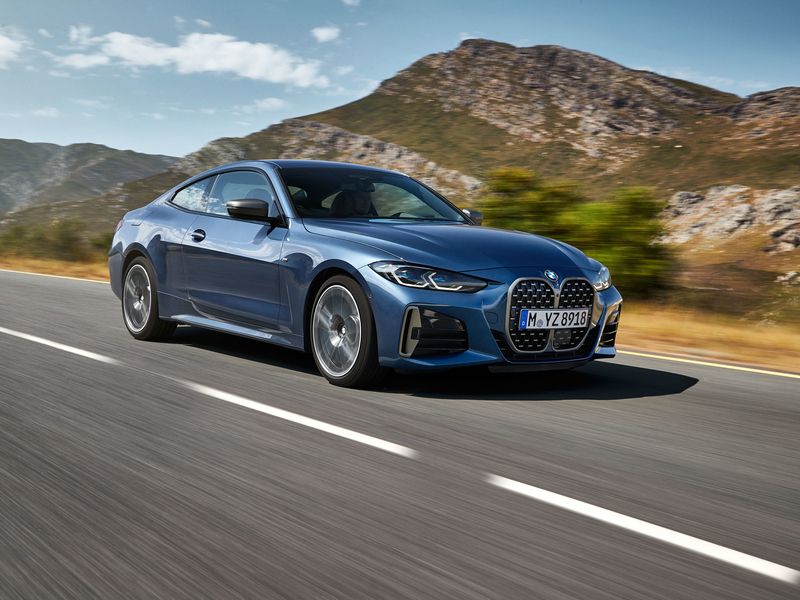
The 4 Series coupe, a pillar of BMW’s U.S. car lineup and a key entry point for the brand, is undergoing a major makeover that delivers fresh styling and more power, performance and safety gear for 2021.
The second-generation 4 Series will launch globally in October and retail in the U.S. starting at $46,595, including shipping.
The coupe, renamed when it was carved out from the 3 Series family in 2015, is BMW’s third bestselling car in the U.S., drawing mostly younger, affluent buyers, though demand fell 41 percent in 2019 to 18,621.
The new 4 Series coupe, 5.2 inches longer and an inch wider than its predecessor, sports a new BMW kidney grille design to cool the vehicle’s beefier engines. The grille is angled forward and extends to the bottom of the front bumper cover. It is framed by surfaces with a three-dimensional mesh structure.
The standard LED headlights are slimmer in design and taper toward the kidney grille. Two U-shaped daytime running light elements in each headlight are the most pronounced feature. The turn signals consist of three glass blade units in the corners of each front light assembly.
All 4 Series variants will receive a boost in horsepower and torque compared with the models they replace.
Powering the new 430i and 430i xDrive coupe is an updated B46 2.0-liter, four-cylinder BMW TwinPower turbocharged engine delivering 255 hp and 294 pound-feet of torque. The M440i xDrive coupe is powered by a B58 3.0-liter, inline six-cylinder BMW TwinPower turbocharged engine producing 382 hp and 369 pound-feet of torque.
The 2021 4 Series uses a suite of ultrasonic sensors, cameras and radars to drive semiautonomously under certain conditions. BMW’s driver-facing, camera-assisted, extended traffic-jam assistant system is part of an optional package. The optical camera, mounted in the instrument cluster, monitors whether the driver’s eyes are open and facing the road. The camera doesn’t record in-cabin activity.
The drive recorder, a new optional feature on a BMW 4 Series equipped with a parking-assistance package, uses the cameras of the various driver-assistance systems to record video from the front and/or rear viewpoints of the vehicle before storing the recordings.
The saved video files can be watched later on the center control display when the car is stationary or exported via the USB port. When activated, the drive recorder shoots and stores up to 40 seconds of video. In the event of a collision, a period of up to 20 seconds around the moment of impact is automatically recorded and saved.